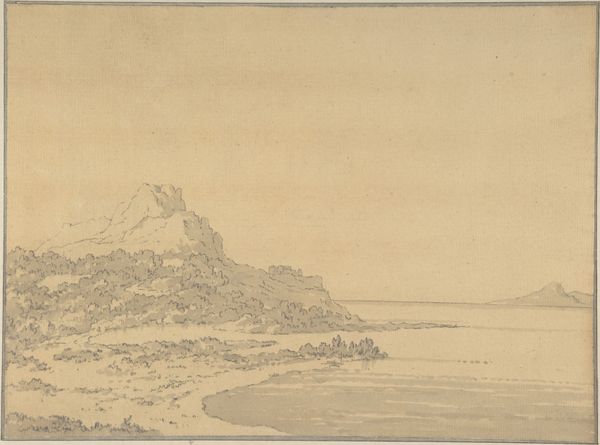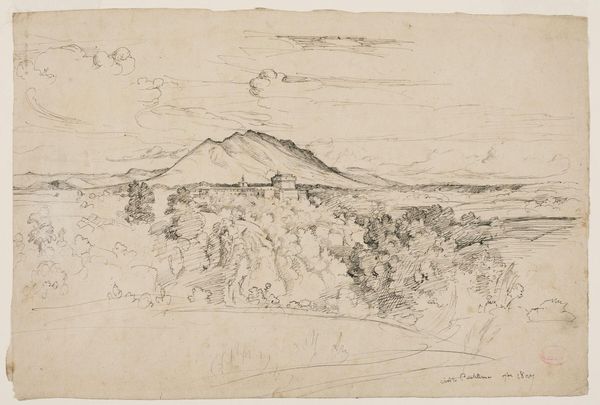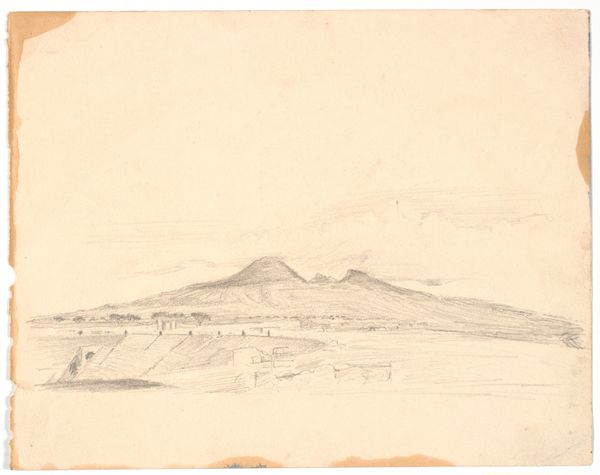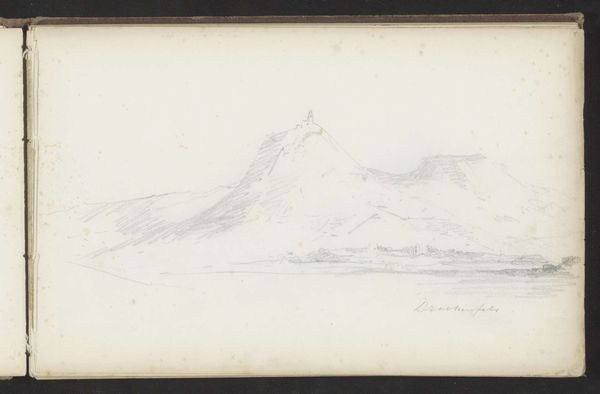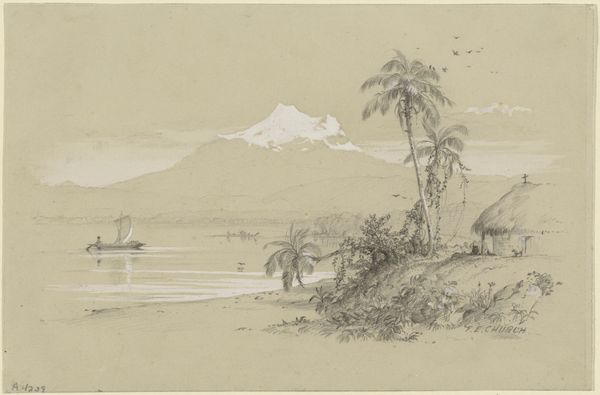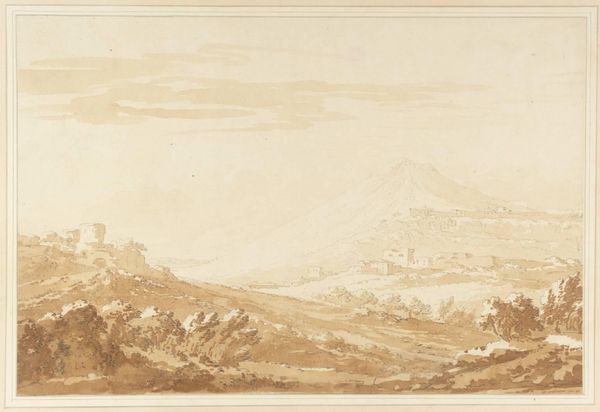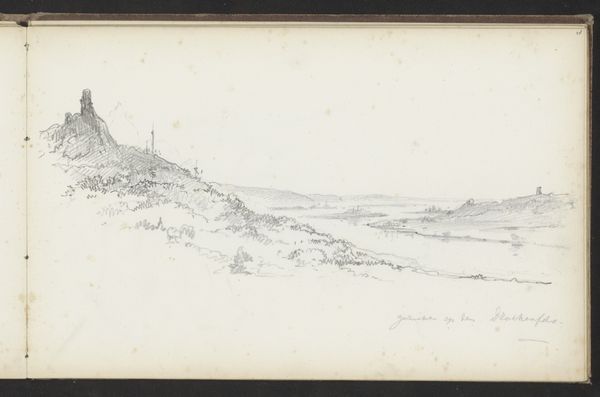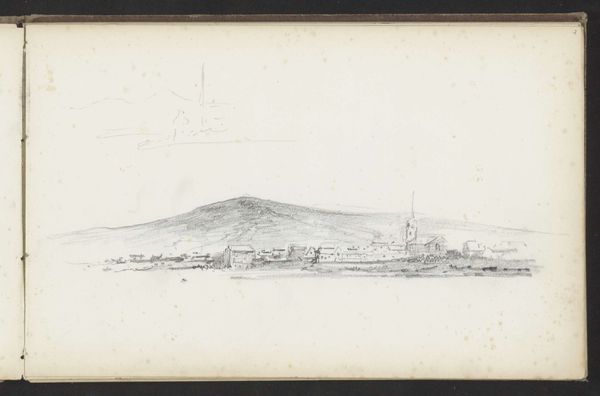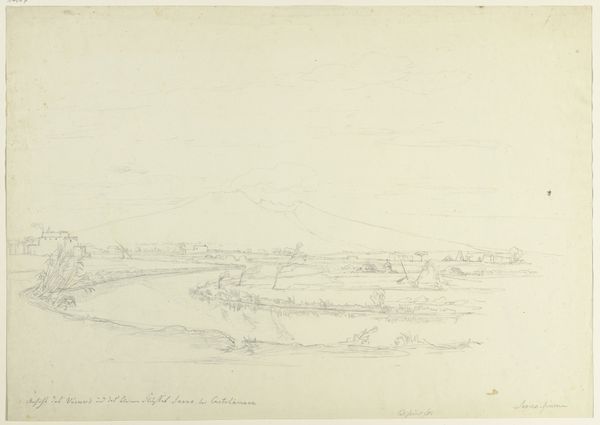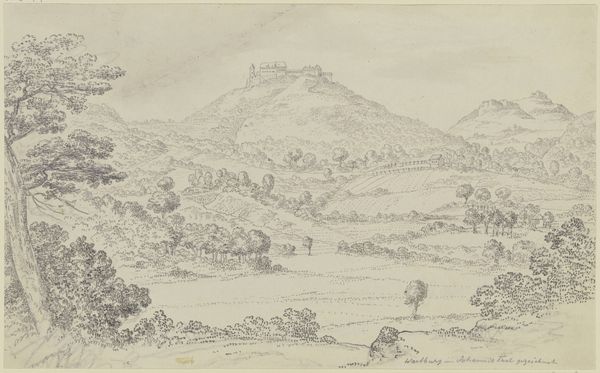
Dimensions: sheet: 9.5 x 14.6 cm (3 3/4 x 5 3/4 in.) mount: 16 x 0.2 cm (6 5/16 x 1/16 in.)
Copyright: National Gallery of Art: CC0 1.0
Here is Edward Lear's vision of "Napoli", articulated with ink and graphite. Dominating the scene is Mount Vesuvius, its plume a stark reminder of nature’s dual capacity for creation and destruction. Volcanoes, throughout history, have been potent symbols. Think of Vulcan, the Roman god of fire, or their presence in ancient myths as the forges of gods. Yet, they are also emblems of mortality, as seen in Pliny the Younger's account of Vesuvius's catastrophic eruption that buried Pompeii. This inherent duality—creation versus destruction—mirrors the complexities of the human psyche. Consider the recurring image of smoke or steam—a motif that transcends time, seen in everything from ancient alchemical illustrations to modern industrial landscapes. These plumes, like Vesuvius's breath, speak to our collective memory of transformation, danger, and the sublime. As viewers, we are drawn to this image on a primal level, experiencing a sense of awe mixed with existential unease. Lear captures not just a landscape, but a psychological space, where the forces of nature and the depths of human emotion converge. The mountain and its smoke endure, evolving from divine symbol to an emblem of our own fleeting existence.
Comments
No comments
Be the first to comment and join the conversation on the ultimate creative platform.
